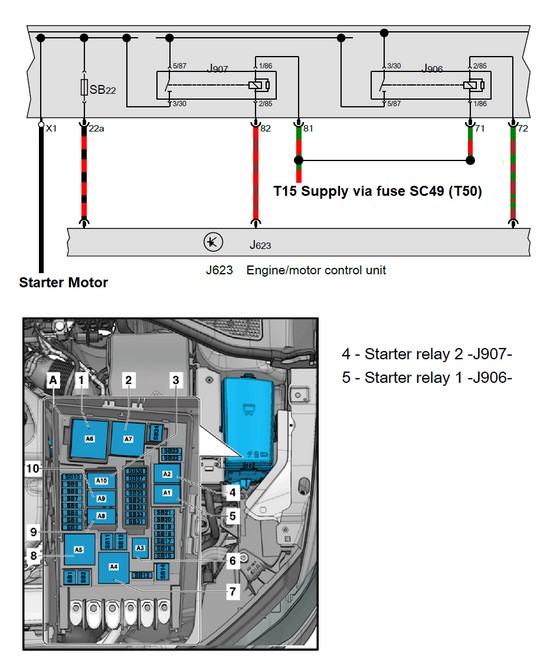Diagnosing intermittent Diagnostic Trouble Codes (DTCs) in a 2017 Audi A3 can be challenging. Without a clear pattern, further testing and data analysis are necessary using a tool like VCDS (Vag-Com Diagnostic System). This article outlines a diagnostic approach for intermittent DTCs, specifically focusing on starter relay issues.
Understanding the Challenge of Intermittent DTCs
When DTCs appear sporadically, identifying the root cause requires a systematic approach. Begin by clearing existing DTCs with your VCDS and monitoring for recurring errors. Observing patterns and correlating them with observable cause-and-effect scenarios is crucial. If a consistent pattern emerges, a “divide-and-conquer” technique can be applied, focusing on the most prominent faults first.
Focusing on Starter Relay DTCs in a 2017 Audi A3
For instance, if your VCDS scan reveals intermittent DTCs related to the Engine Control Unit (ECU), specifically the starter motor circuit, this could be a logical starting point. This system is relatively self-contained, making it easier to isolate.
Let’s say your VCDS scan reveals these ECU-related DTCs:
- 5273 – Output for Starter Relay: P0616 00 [038] – Short to Ground
- 5459 – Control Circuit for Starter Relay 2 :P3048 00 [038] – Short to Ground
- 4710 – No Communications with Airbag Control Module
Initially, we might set aside DTC #3, as the freeze frame data likely indicates the engine wasn’t running when it occurred, possibly during cranking.
 Simplified wiring diagram for an Audi A3 8V with Start-Stop functionality
Simplified wiring diagram for an Audi A3 8V with Start-Stop functionality
This simplified wiring diagram (WD) illustrates the engine cranking process in an Audi A3 8V with Start-Stop. Note how the starter motor is controlled by two relays (J906 and J907) in a daisy-chain configuration. Relay J906 switches battery voltage to an intermediate rail, which J907 then switches to the starter motor.
The coils of these relays are controlled by the ECU (J623) via separate pins, with power supplied from the car’s T15 rail (referred to as T50 in this section).
DTC #2 suggests an intermittent short-to-ground in the control circuit for relay J907. DTC #1, without specifying a relay, implies a possible short-to-ground on the output side of either relay.
Initial Inspection Points
Based on this analysis, a visual inspection of relay J907 (Starter Relay 2) located on the “B” fuse panel in the engine bay is recommended. Check for signs of damage or distress. Unplug the relay and examine the contacts on both the relay and the fuse panel for corrosion or debris. Consider swapping starter relay 1 and 2 to see if the DTC descriptions change, further isolating the problem. Using VCDS to monitor live data during cranking can also provide valuable insights.
Conclusion
Troubleshooting intermittent DTCs in your 2017 Audi A3 with VCDS requires a methodical approach. By analyzing DTC patterns, understanding system wiring diagrams, and performing targeted inspections, you can effectively narrow down the potential causes and arrive at an accurate diagnosis. Remember to consult your Audi A3’s specific wiring diagrams and repair manuals for detailed information and safety procedures.
